
As a hot desker, the ergonomic chair you’re given to sit on this Wednesday in the office has been sat on by Mark on Monday and Tara on Tuesday.
Mark and Tara are entirely different dimensions to you! So how can you very quickly adjust that ergonomic chair for your support and comfort so you can crack on with your busy day?
I’ll show you in this article how you can adjust your office chair at the start of the day to achieve an ergonomic position in less than 60 seconds...
Why bother with adjusting your task chair?
It’s really important to your wellbeing and short and long-term health to make the most of the adjustability of an ergonomic task chair. It makes sense to optimise your support and comfort. A suitable sitting posture for you can help to prevent and ease back pain and other musculoskeletal issues while you work at a workstation.
So do get to know and love those levers on your chair. It’s quicker and simpler than you might think.
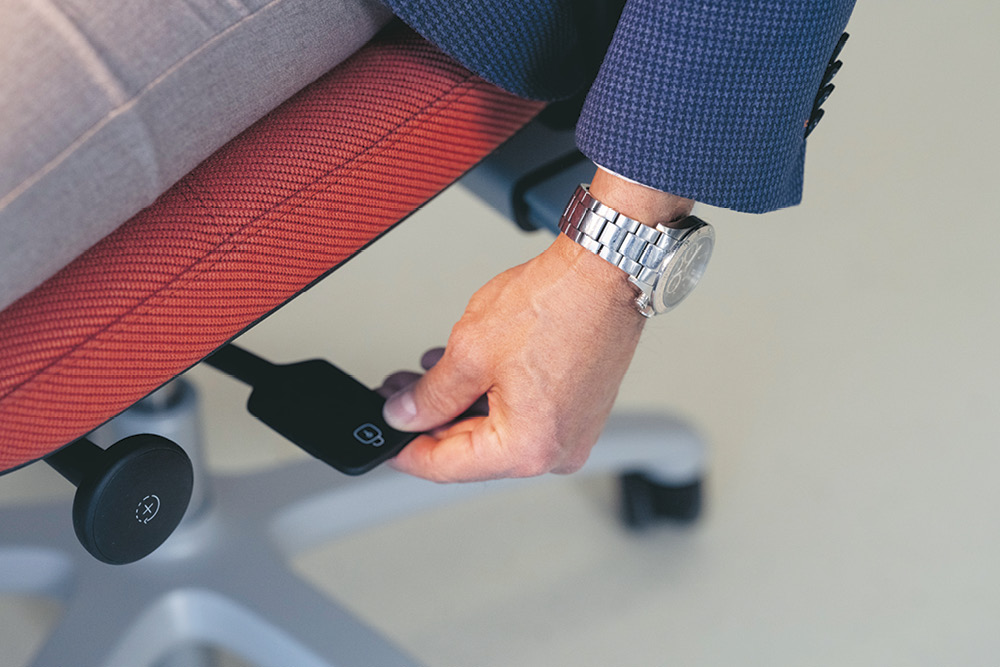
Where to find each lever varies depending on the chair model – but many chairs have an illustration on each lever to help you know what it does.
It will take you less time to make the adjustments than to read about them by the way! Each takes just a few seconds.
1 Adjust the chair’s seat height

Here are the chair adjustments if you’re at a height-adjustable desk:
Lift the seat height lever. Lean forwards, tilting your bodyweight from the chair, and it will raise. The right height for you will be when your:
- hips are slightly higher than your knees
- feet are supported on the floor or on a footrest, not hanging unsupported
- upper arms are relaxed by your body and your shoulders are relaxed
Adjust your desk height now so that:
- your forearms are level with your keyboard
Using a fixed-height desk? First of all, adjust your chair height so that your forearms are level with your keyboard and then check that your hips are higher than your knees. If not, your desk may actually be the wrong height for you and may need to discuss this with your employer. And if your feet are not touching the floor, you need a foot rest.
2 Adjust the seat pan length
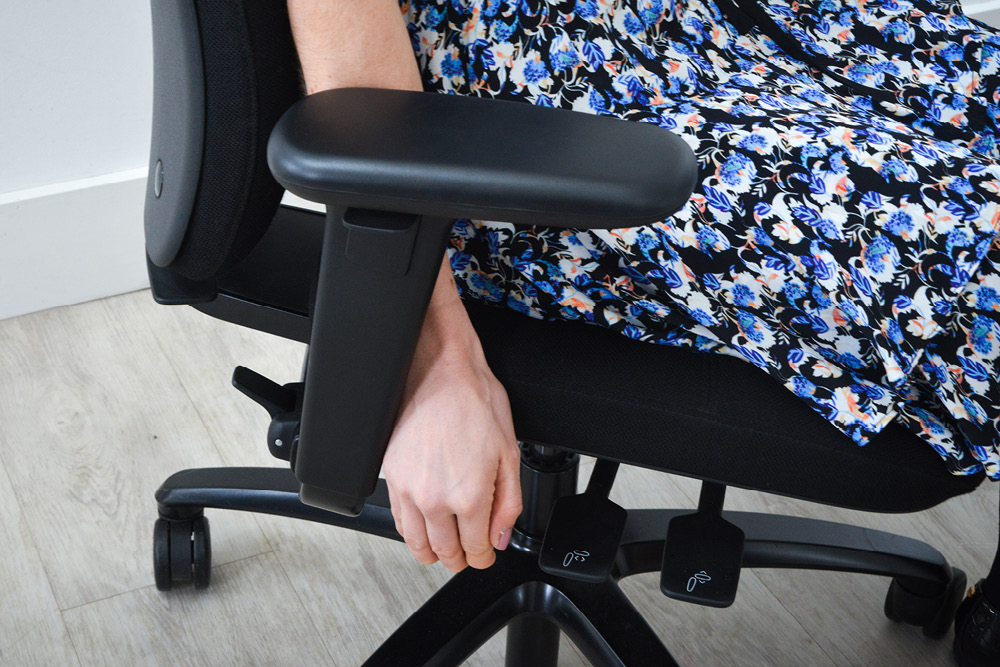
Adjust the seat of the office chair forward or backward to provide good support to your thighs, whilst allowing you to sit back in the chair.
You want as much thigh support as possible, but no pressure behind the knees. So make sure there is a gap between the front edge of your chair and the back of your knees. People have different thigh lengths, so this is important!
3 Adjust the height of the backrest
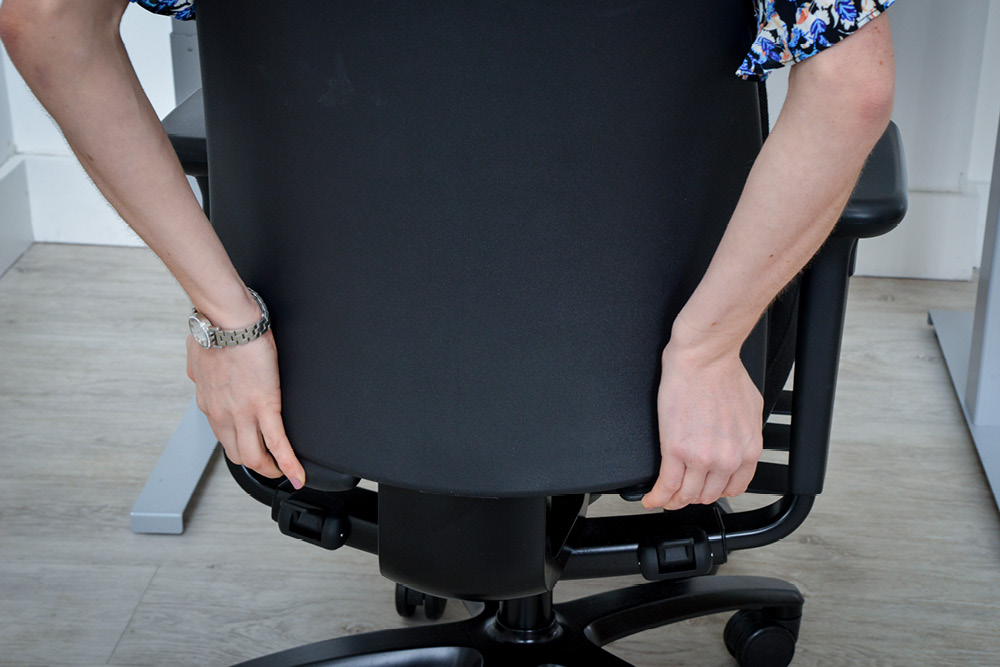
Again, the Positiv Plus chair is a good example of an office chair which enables you to adjust the backrest height, not just the height of the whole chair.
Use the lever to change the height of the backrest so that the outward bulge/curvature of the backrest sits in the small inward curve of your lower back. This will be a big benefit to your comfort!
Some ergonomic chairs also feature inflatable lumbar cushions, so use the pump to find your chosen level of support.
4 Adjust the backrest angle
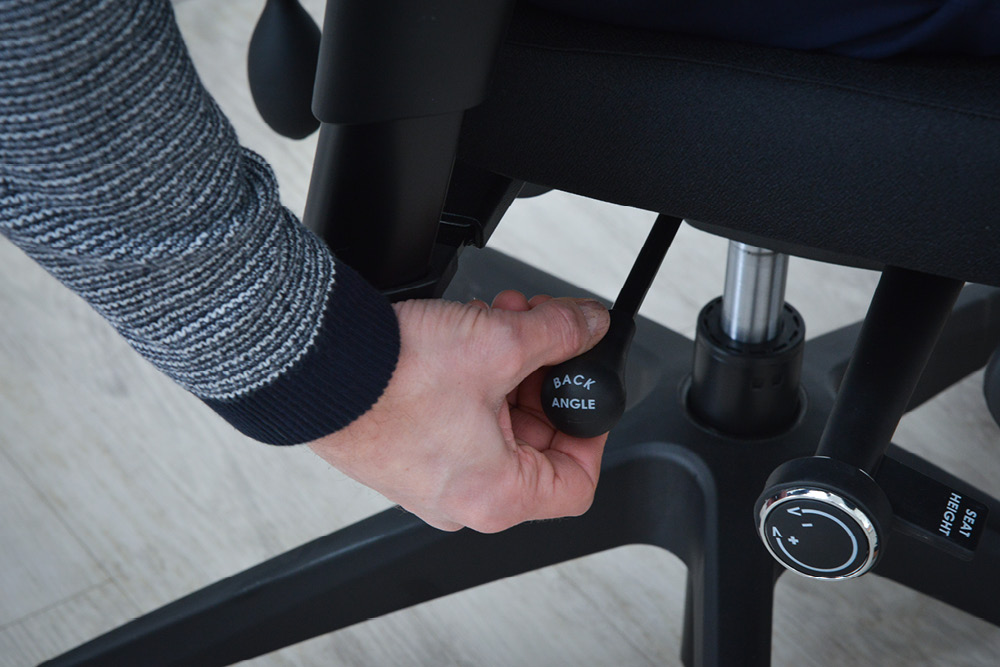
If your chair enables you to, use the lever to adjust the angle of the backrest until you are just off (5-10 degrees off vertical) upright, so you can feel the back rest providing support.
5 Adjust the chair arms
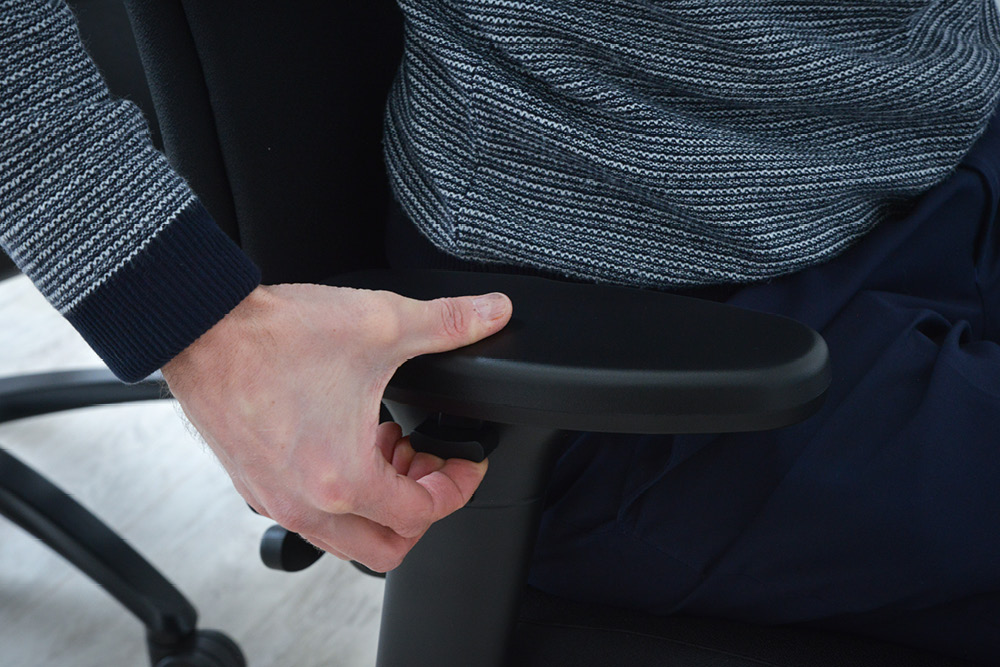
You can adjust the height of the arms on many good office chairs. Using their buttons or levers, lift them up or down so they are just beneath your elbow when you’re typing, and your shoulders are relaxed.
If your chair arms are also depth-adjustable, for example on a Positiv Plus chair, make yourself comfortable at your desk by adjusting the arm depth forwards or backwards. This is helpful to provide the support you want without the chair arms hitting the desk.
If your chair arms are also width-adjustable, you can change them to suit the width of your body and to enable your arms to rest comfortably by your body.
The total time to adjust your office chair?
Well I tested this out and these chair adjustments above took me 38 seconds in total! So even less than the 60 seconds I promised…
Here's also a video showing you these step-by-step office chair adjustments:
Want to adjust the headrest too, if your chair has one? Often height, angle and distance adjustments are available to achieve the support you need for the tasks that you do.
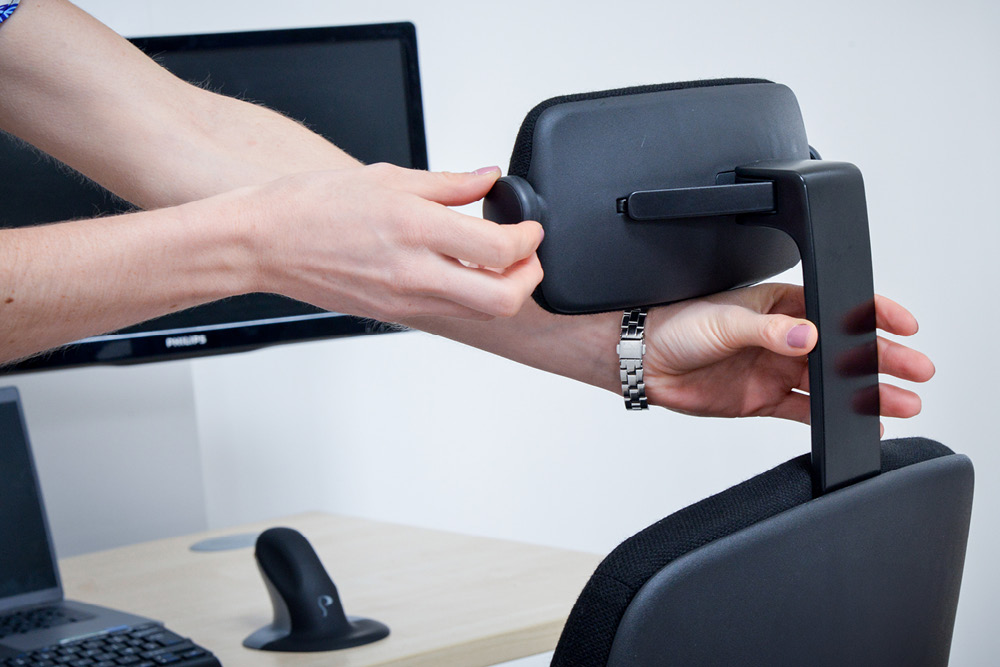
And if your chair has a tensionable movement mechanism, adjust this to provide suitable support without feeling pushed. To enable a free-float mode, lift up the lever that says ‘lock’ and you’ll then be able to lean forwards or backwards with the chair.
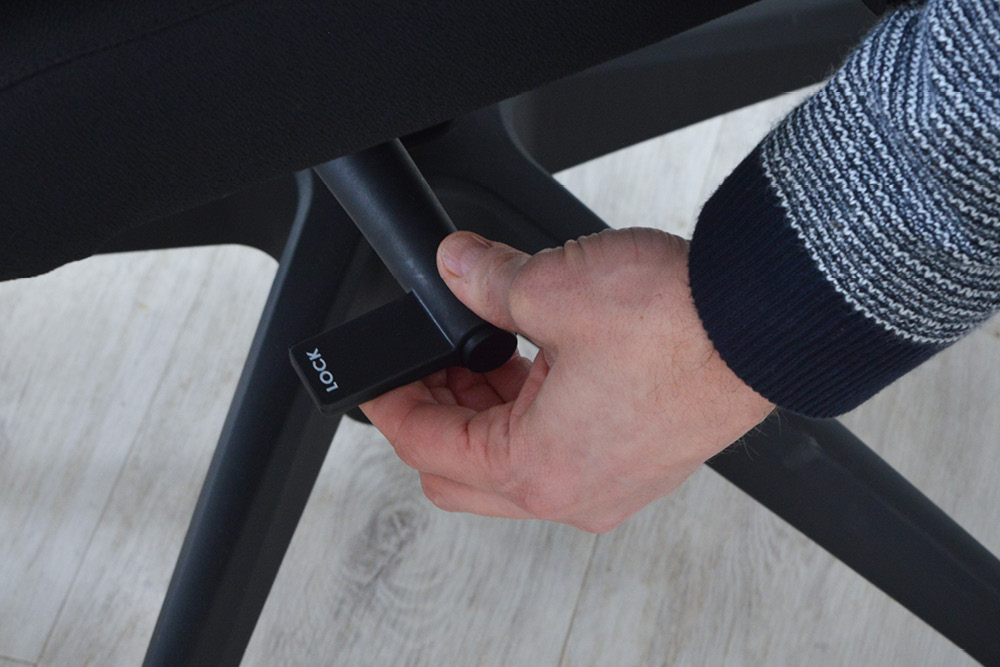
My aim here has been to show you just how simple it is to adjust your task chair correctly by yourself.
But if you have questions about easing the discomfort you feel when working on a computer at a desk, you could ask your employer for a problem-solving Display Screen Equipment Assessment and an expert will guide you through the best workstation positioning for you, one-to-one. This assessment is extremely helpful if you have a health condition or disability which affects your comfort at work.
Remember; no matter how sophisticated the design and performance of your ergonomic chair, it will only be ergonomic if it’s adjusted and positioned correctly for you. Take just these few seconds to improve your working day.
Read and watch next:










